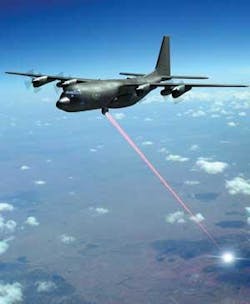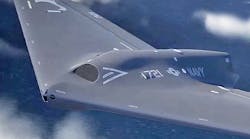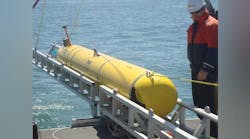ALBUQUERQUE, N.M.–The U.S. Air Force’s experimental Advanced Tactical Laser (ATL)–a high-energy laser weapon fitted to a C-130 turboprop aircraft–hit and damaged a moving vehicle in late September in a test that demonstrated for the first time the laser weapon’s ability to attack moving targets effectively.
The test occurred less than three weeks after an Aug. 30 test in which ATL damaged an unoccupied stationary vehicle, marking the aircraft’s first air-to-ground, high-power laser engagement of a tactically representative target.
The ATL, a research program of the Boeing Co. and the Air Force, damaged a moving ground vehicle from the air on 19 Sept. using the ATL C-130 aircraft, completing ATL’s first air-to-ground, high-power laser engagement of a mobile target.
During the test, the C-130H aircraft took off from Kirtland Air Force Base near Albuquerque, N.M., and fired a high-power chemical laser through its beam control system while flying over White Sands Missile Range. The beam control system guided the laser beam’s energy to the unoccupied, remotely controlled target, striking the vehicle and putting a hole in a fender.
“In this test, a directed-energy weapon demonstrated direct attack on a moving target,” says Gary Fitzmire, vice president and program director of the Boeing Missile Defense Systems Directed Energy Systems unit. “ATL has targeted and engaged stationary and moving targets, demonstrating the transformational versatility of this speed-of-light, ultra-precision engagement capability that will reduce collateral damage.”
The Boeing-led ATL industry team includes L-3 Communications/Brashear, which built the laser turret; HYTEC Inc., which made a variety of structural elements; and J.B. Henderson, which provided mechanical integration support. For more information, visit Boeing Integrated Defense Systems online at www.boeing.com/ids.
More Military & Aerospace Electronics Current Issue Articles
More Military & Aerospace Electronics Archives Issue Articles



